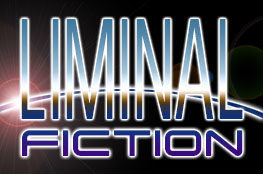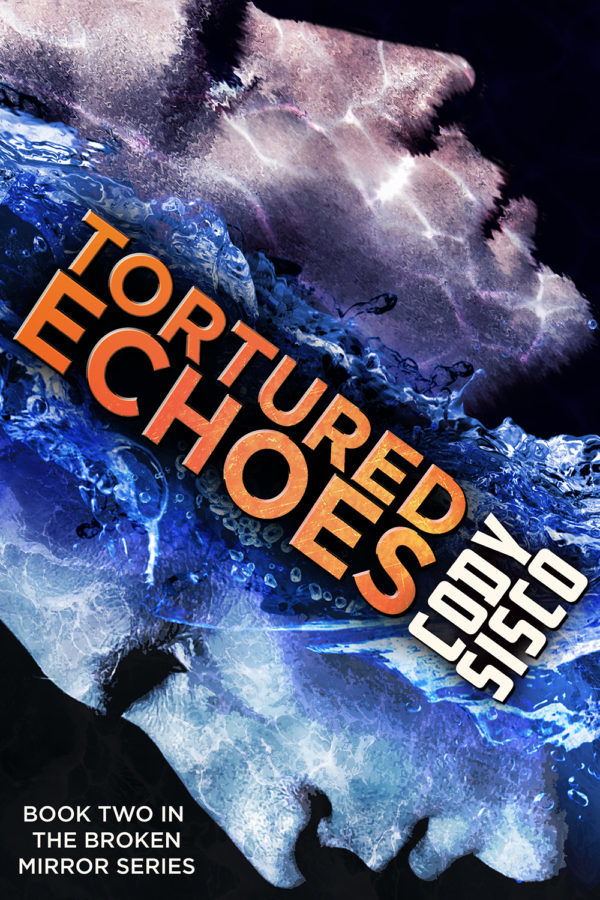Genre: Sci-Fi
Reviewer: Lee
Get It On Amazon
About The Book
Tortured Echoes is Volume Two of the Resonant Earth saga that began in Broken Mirror.
Bioinformatics whiz Victor Eastmore at long last gains control over his frightening mirror resonance syndrome, but he still believes his grandfather was murdered.
Victor’s best hope for finding justice lies in New Venice, a tourist town in the Louisiana Territories where his family’s company is exploring new treatment options for so-called “Broken Mirrors” and the stim addicts who experience similar symptoms–blank outs, synesthesia, and euphoria. Only by confronting Samuel Miller, the MRS “patient zero” who was responsible for the Carmichael Massacre, can Victor learn the truth. To do that, Samuel must first be weaned off Personil, the drug that keeps his mirror resonance syndrome in check. Can Victor learn the data egg’s darkest secrets without unleashing a violent madman?
Meanwhile, a cult dedicated to the sanctity and purity of human life disrupts New Venice with protests and vandalism. When they take an interest in stopping BioScan from medicating MRS patients, including Samuel Miller, Victor finds himself with unlikely allies and divided loyalties.
As pressure builds for the nations of the American Union to pass new legislation to control Broken Mirrors, Victor must become an effective advocate for people with MRS or risk being institutionalized along with them.
A fast-paced sequel to Broken Mirror, Tortured Echoes continues the sci-fi detective saga of Resonant Earth. In this installment, fans of Broken Mirror will finally get answers to their questions: Why was Jefferson Eastmore killed? How did it happen? Who was responsible?
Revisit the world of self-driving cars, stunsticks, brainhackers, and herbalism with Victor, Elena, Ozie, Tosh, and Karine, and several new figures that might help Victor chart a new course for his future, or condemn him to madness.
The Review
Cody Sisco’s Tortured Echoes is the second book in an alternate reality series about Victor, a highly intelligent young man who has been diagnosed with a serious mental illness called mirror resonance syndrome (MRS). Victor continues to struggle with the stigma of his disease, the mystery of his beloved grandfather’s murder and the suspicion that his world is hiding something important about his disease. Victor’s agency is continually under assault from his disease, those who treat it, and perhaps, himself. And the reader may well question the reliability of all these agents, including Victor.
MRS follows from real world theories of empathy. Some psychologists believe that emotional empathy involves the simulation or mirroring of observed behavior from one animal to another. There is a biological connection to this theory in something called a mirror neuron. MRS in Broken Mirror is a disorder of the mirror neurons resulting in a variety of mental issues including paranoia, hypersensitivity, and in a famous case within the book, a murderous rampage. MRS patients sometimes see “Ghosts”, and apparently, sufferers of MRS “Cannot tell fact from fiction.” This last statement is used to marginalize Victor throughout this series.
It is difficult to find a character to root for in Tortured Echoes. Victor is essentially an anti-hero. Circe is impossible to understand and is either being written inconsistently (unlikely) or has a secret agenda that remains a mystery to the reader. The other characters are either antagonistic, naïve, opportunistic, paranoid, or lack heroic agency. This may fit into Sisco’s thematic motif, but deprives the story of sympathetic energy, ever when the pace ramps up.
Cody’s main focus is in illustrating the horror of having a perceived mental illness. In the first pages of the story a woman in charge of the care of an MRS patient, says, “You don’t need to be gentle, he can’t feel a thing.” Sufferers of mental illness are victims of alienation and cruelty. When Victor is assaulted, he is treated as: (a) a liar and (b) as if whatever happened was his fault. Everything Victor says and does is treated through a lens of distrust, distaste, and disbelief. Reading this abuse feels awful. But there is purpose to the torture in Tortured Echoes. This is how we have often treated the victims of sexual assault or mental illness.
The world of Tortured Echoes is an alternate reality, but modern readers should take Cody’s portrayal of the inhumane treatment of patients of mental illness not as unbelievable or as alternate history, but as historically based. We have spent far more time abusing the ill than treating them humanely. Some cultures have treated the mentally ill as if they were possessed and performed exorcisms or other rituals. Trephination, the drilling of a hole into the skull, was another early treatment. By the 17th century, such destructive curatives as bleeding the patients or forcing them to vomit out the “ill humors” of their minds were attempted. The practice of lobotomy did not cease until about the 1970’s. Stigma of mental illness and victim blaming for assault still persists today.
From the first page of Tortured Echoes there were two questions on my mind: first, who was benefiting from MRS and the treatment of MRS patients, and secondly, was MRS really the disease people claimed it to be? The first question, “who benefits?” is often relevant, and definitely so in this story. A lot of money and regulatory power has been bent to dealing with MRS, a disease that afflicts many people (1%—an extremely high number) but has only resulted in one spectacularly violent episode. Some might believe that the availability cascade following Samuel Miller’s murder-spree accounts for the nationwide revilement and eventual incarceration of a large percentage of MRS patients, but that was one incident. Blown out of proportion by an availability cascade, but still, a reaction so expensive on human freedom and capitol is far beyond the pale. So, we must wonder where the profit lies in the system of treatment. And with who. And why Victor’s grandfather was murdered.
The second question, “Is MRS what people are saying it is?” relates to the first. The description of the disease—as being related to the mirror neurons, an element of human empathy—never convinced me as a homicidal pathology. I consulted with my friend, a psychology professor, about this. Given the obvious the difficulties (foolishness?) of evaluating a fictitious disease, let alone something as complex and nuanced as an impairment of the mind, we could not be decisive. However, it seemed more likely that a disease of the mirror neurons would make it difficult to discriminate the important from the unimportant rather than what was real from what was not. And going back to homicide, only one patient ever committed murder. Adding further credence to this suspicion is the systemic destruction and suppression, until recently, of research on MRS. Where is the profit in this suspect definition; what is the real threat? There are hints throughout books one and two that something else is going on, that Broken Mirrors may not be reflecting incorrectly at all, perhaps they are simply reflecting something else. This kind of misnomer is not uncommon in applied science: for example, certain unwanted wave phenomena are classified as “noise” when they are perfectly valid. Perhaps the “ghosts” they are connecting with are part of some other quantum-multiple-worlds reality. If so, what is the opportunity, threat, or cure to this?
The latter half of Tortured Echoes puts these questions on the back burner and instead looks at mysticism, mob irrationality, other unexpected elements of opportunism associated with the treatment of MRS, and a revolt against pharmacology. These issues may be presented organically, but their treatment results in a lack of progress on the core questions of the series. This will be a draw-back for some readers. To endure so much alienation, suffering and marginalization demands—at some point—the release of an answer. Perhaps this awaits the reader in Cisco’s next book.
Tortured Echoes entertains by asking uncomfortable questions rather than offering the simple feel-good escapism of some science fiction. Victor’s struggle for agency is probably realistic and serves Sisco’s thematic aims but be warned that some readers may mirror this plight with their own psychologic depression. On the other hand, holding a mirror up to our own history of marginalizing and mistreating the mentally ill should not feel good.
Takeaway: This series offers a multifaceted perspective on mental illness and its treatment. Is mental illness always what we think it is? Are we abusing the ill? Are there always some agents ready to take advantage? Fans of Neal Stephenson and Michael Crichton may enjoy this work.
The Reviewer
Lee has a background in physics and applied science, but has always enjoyed reading fiction. His first serious forays in writing came from dungeon mastering and high school drama club, although for nearly three decades as a geophysicist, he wrote only non-fiction. At the age of 25, Lee spent a prolonged period of time on the edge of death, had the last rights read to him, and enjoyed several near death experiences. Not even all the morphine could make him forget those. Lee enjoys rock climbing, cycling, hiking, swimming and writing. He is an Ironman Triathlete.


